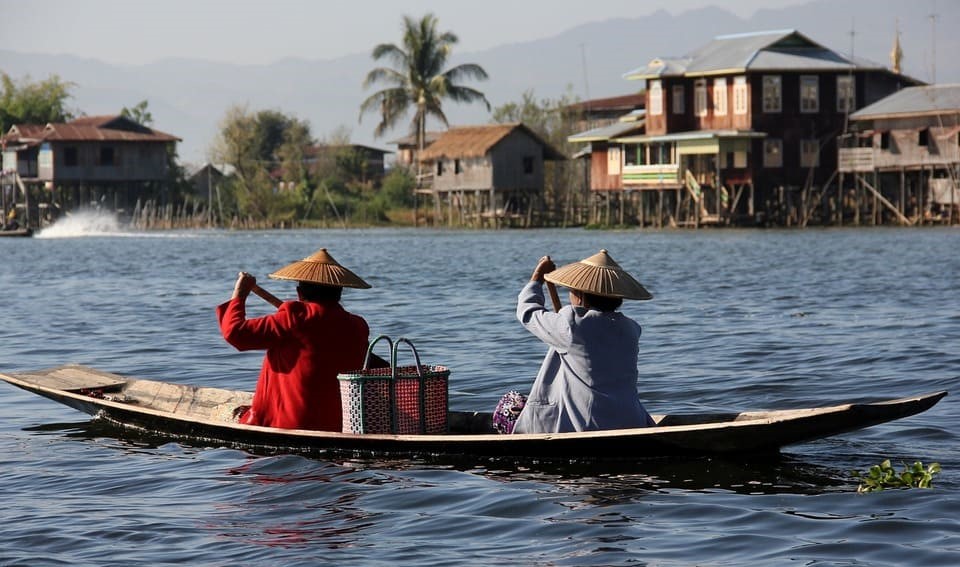
Burmese and Myanmar Languages Difference and their Most Popular Translations
Have you ever been confused by the terms “Burmese language” and “Myanmar language”? Are they two different languages? Or is it two names for the same language? In this blog, we will explore the difference between Burmese and Myanmar as well as provide some useful information about both languages.
Burmese language overview
The Burmese language is the official language of Myanmar (formerly known as Burma). It belongs to the Sino-Tibetan family of languages, which includes Tibetan, Chinese, and Karen. Burmese is spoken by an estimated 33 million people in Myanmar (formerly known as Burma) and surrounding countries. It is written using the Burmese script, a syllabic style of writing similar to Thai which uses circles and other shapes to represent sounds. The Burmese language is also closely related to Mon, Karen, and Shan languages. The language has been in use for thousands of years but was standardized as part of the British colonial period in the 19th century.
Myanmar language overview
On the other hand, Myanmar is an ethnic group that lives mainly in central Burma. They speak a variety of languages such as Danu, Padaung, Mro-Khimi, Palaung-Wa, Zayein-Wa, S'gaw Karen, etc. However, their official language is still Burmese. Even though they have many dialects of their own which are only spoken among them in certain areas around Burma.
The most widely spoken language from them is the Myanmar language. That language is closely related to Burmese, but it is sometimes considered a dialect or variant of Burmese rather than its own distinct language. It is also a member of the Sino-Tibetan family of languages, but it has some unique features that set it apart from other members of this family. For example, while most Sino-Tibetan languages have tones (i.e., syllables that change meaning depending on their pitch), Myanmar does not have any tones at all.
Furthermore, while most Sino-Tibetan languages are written with characters borrowed from Chinese writing systems, Myanmar uses its own distinctive script called “Myanmar Unicode” which is based on the ancient Mon script (which has been in use since before the 12th century). This script has been adopted as the official script for both Burmese and Myanmar.
Similarities and differences between Myanmar and Burmese languages
Both languages share many features including similar grammar structures and vocabulary words; however, there are still some differences between them that make them distinct from each other. For example, while both use noun modifiers instead of conjugations to indicate tenses and plurals (e.g., “cat-plural” instead of “cats”), Burma uses more noun modifiers than Myanmar does. Furthermore, while both languages have many loanwords from Pali (the liturgical language of Theravada Buddhism), Burma has more loanwords than Myanmar does due to its long history as a Buddhist kingdom until its colonization by Britain in 1885. Finally, while both have similar phonology rules with only minor variations (such as vowel length), Burma tends to be more conservative in its pronunciation than Myanmar does on certain consonant clusters such as /tr/, /dr/, /kr/ etc.
It can be confusing because there are two names used for one language; however, it's important to understand that there are small nuances between them. To put it simply: The people of Myanmar speak Burmese but also have their own dialects which are separate from the official version of the language known as “Burmese”.
Plus, since English has become more popular among people living in urban areas of Myanmar due to increased access to international media sources like Netflix and YouTube; many younger generations now communicate with each other in English instead of their native tongue.
The Most Popular Translations of Burmese and Myanmar Languages
Burmese and Myanmar Languages are two distinct languages spoken by millions of people in Southeast Asia. While Myanmar and Burmese share similarities, there are important differences between the two. It is crucial to understand these differences if you are planning on doing business or traveling in the region. There are the most popular translations of each language and highlighting some key points to consider before deciding which ones to use.
Burmese Language Translations
The most popular translation of Burmese is English. This makes sense given that it is the language of international business, politics, and diplomacy. Other common translations include Spanish, Japanese, French, German, Chinese and Russian. If you plan on doing business in Burma or other countries where Burmese is spoken, it’s important to be aware that English may not always be the primary language used for communication. For example, many local businesses may communicate with their customers exclusively in Burmese or a combination of Burmese and another local language such as Karen or Mon.
The most common language translations with Burmese
- Spanish to Burmese translation
- Japanese to Burmese translation
- French to Burmese translation
- German to Burmese translation
- Chinese to Burmese translation
- Russian to Burmese translation
- English to Burmese translation
- Burmese to Korean translation
- Malay to Burmese translation
- Tamil to Burmese translation
Myanmar Language Translations
The official language of Myanmar is Myanmar (formerly known as Burmese). While English is still widely spoken in many parts of the country, many people prefer to communicate in their native tongue when conducting business or engaging in everyday conversations with friends and family members. The most popular translations of Myanmar are English and Chinese (Mandarin). It’s worth noting that while Mandarin is widely understood by many people in Myanmar, it’s not as commonly used as English when it comes to official documents or public discourse.
The most common language translations in Myanmar
- Myanmar to English translation
- Translation from Chinese to Myanmar
- Korean Myanmar translation
- Tagalog to Myanmar translation
- Bangla to Myanmar translation
- Malay Myanmar translation
- Hindi to Myanmar translation
- Myanmar to Philippines translation
- Myanmar to Tagalog translation
- Tamil to Myanmar translation
Understanding different regional languages can help make your travels more enjoyable while also opening up opportunities for business growth. When deciding which translations to use for either the Burmese or the Myanmar languages it’s important to consider both a practical approach (which one will enable me to accomplish my goal) but also an emotional one - what language would make me feel more comfortable communicating with others?
Short conclusion about Myanmar and Burmese languages
In summary, Burmese and Myanmar are two closely related yet distinct languages belonging to the Sino-Tibetan group of languages spoken mainly in Myanmar and surrounding countries. While they share many similarities such as similar grammar structures and vocabulary words, there are also key differences between them such as different levels of conservatism in pronunciation, different amounts of loanwords from Pali, and different scripts.
While both terms are often used interchangeably when referring to a single language spoken by people living in Burma/Myanmar – there are subtle differences between these two terms that need to be considered when discussing either one of them separately or together. While the official government-sanctioned language remains Burmese - various dialects spoken by members of different ethnic groups across the region add an interesting layer to how communication works in this part of Asia.
At PoliLingua we are proud to have a team of language experts who understand the difference between Myanmar and Burmese and can provide professional translation and interpretation services for both languages. If you need a reliable partner for your Myanmar or Burmese language translation needs, don't hesitate to contact us. We will be happy to discuss your specific requirements and provide you with a free quote.







